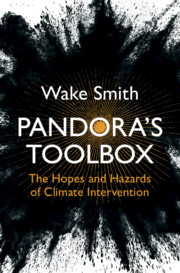Refine search
Actions for selected content:
4 results
Meeting climate goals through mitigation and intervention: developments in emissions reduction, greenhouse gas removal, and solar radiation modification
- Part of
-
- Journal:
- Global Sustainability / Volume 8 / 2025
- Published online by Cambridge University Press:
- 12 May 2025, e20
-
- Article
-
- You have access
- Open access
- HTML
- Export citation
9 - Our Descendants Will Demand Climate Intervention
- from Section II - Responses to Climate Change
-
- Book:
- Pandora's Toolbox
- Published online:
- 24 February 2022
- Print publication:
- 24 March 2022, pp 130-148
-
- Chapter
- Export citation

Pandora's Toolbox
- The Hopes and Hazards of Climate Intervention
-
- Published online:
- 24 February 2022
- Print publication:
- 24 March 2022
18 - Geoengineering
- from Part III - The Future
-
- Book:
- The Climate Demon
- Published online:
- 02 November 2021
- Print publication:
- 21 October 2021, pp 280-286
-
- Chapter
- Export citation
